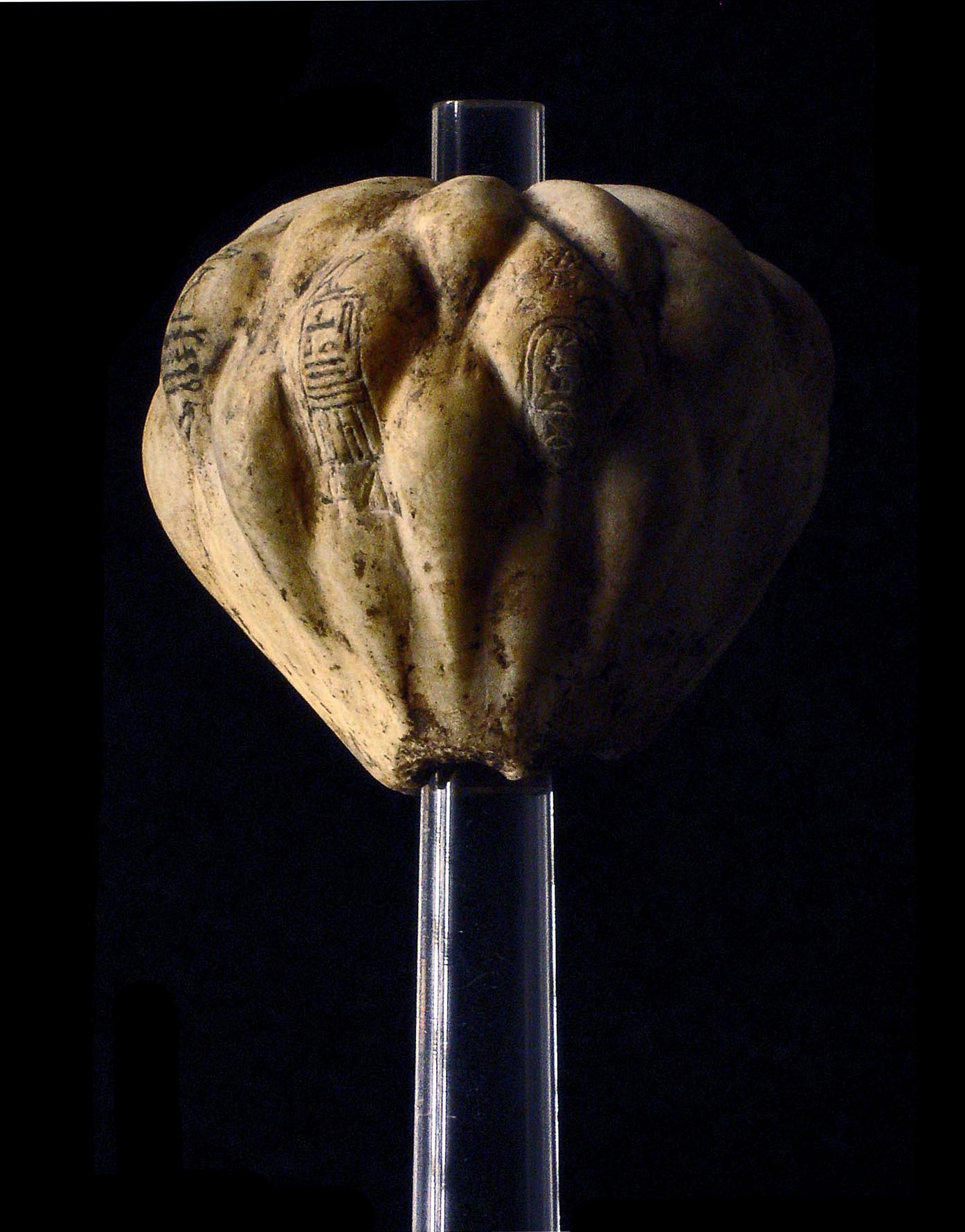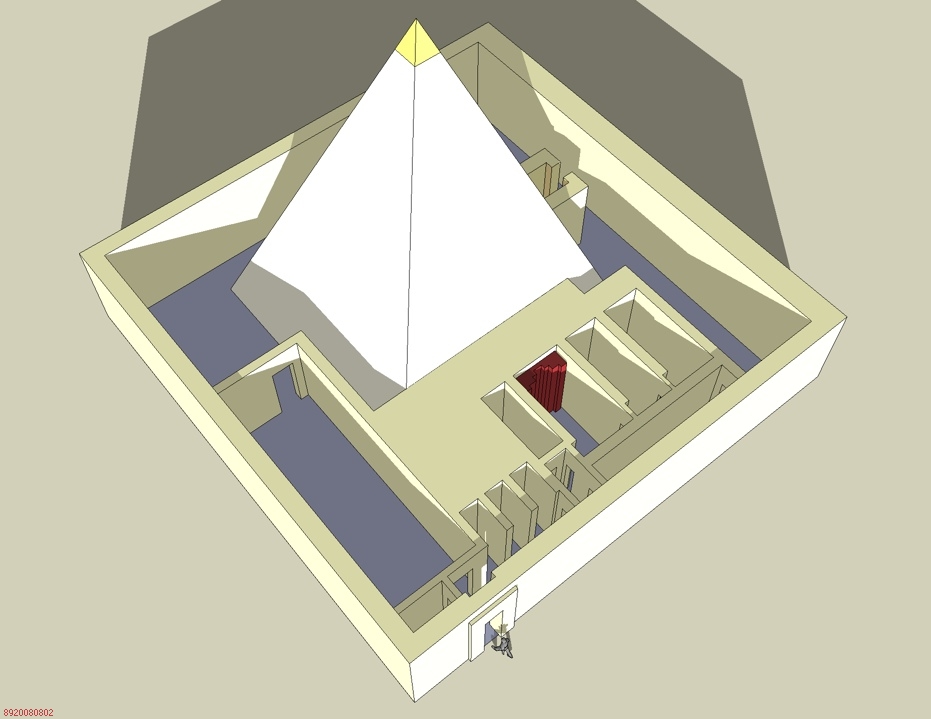|
Iput
Iput I ( 2375 BC - 2325 BC) was a queen of ancient Egypt, a daughter of Pharaoh, King Unas, the last king of the Fifth Dynasty of Egypt. She married Teti, the first King of the Sixth Dynasty of Egypt. Their son was Pepi I Meryre, Pepi I.Dodson, Aidan and Hilton, Dyan. The Complete Royal Families of Ancient Egypt. Thames & Hudson. 2004. She possibly ruled as regent for her son Pepi I. Life Iput may have been a daughter of the Fifth Dynasty King Unas. Her mother was Nebet (queen), Nebet or Khenut. She married King Teti, who was the first king of the Sixth Dynasty of Egypt. Their son was King Pepi I. Iput is depicted with her son Pepi on a decree-stela from Koptos. The skeletal remains found at her pyramid show she died as a middle-aged woman. Iput had another son, Nebkauhor. She had several daughters: Seshseshet Waatetkhethor, Seshseshet Idut, Seshseshet Nubkhetnebty and Seshseshet Sathor. Titles of Iput I Iput I held several titlesGrajetzki, Ancient Egyptian Queens: A Hierogly ... [...More Info...] [...Related Items...] OR: [Wikipedia] [Google] [Baidu] |
Pepi I Meryre
Pepi I Meryre (also Pepy I; died 2283 BC) was an ancient Egyptian pharaoh, king, third king of the Sixth Dynasty of Egypt, who ruled for over 40 years from the 24th to the 23rd century BC, toward the end of the Old Kingdom of Egypt, Old Kingdom period. He was the son of Teti, the founder of the dynasty, and ascended the throne only after the brief intervening reign of the shadowy Userkare. His mother was Iput, who may have been a daughter of Unas, the final ruler of the preceding Fifth Dynasty of Egypt, Fifth Dynasty. Pepi I, who had at least six consorts, was succeeded by his son Merenre Nemtyemsaf I, with whom he may have shared power in a coregency at the very end of his reign. Pepi II, Pepi II Neferkare, who might also have been Pepi I's son, succeeded Merenre. Several difficulties accumulated during Pepi's reign, beginning with the possible murder of his father and the ensuing reign of Userkare. Later, probably after his twentieth year of reign, Pep ... [...More Info...] [...Related Items...] OR: [Wikipedia] [Google] [Baidu] |
Teti
Teti, less commonly known as Othoes, sometimes also Tata, Atat, or Athath in outdated sources (died 2333 BC), was the first pharaoh, king of the Sixth Dynasty of Egypt. He was buried at Saqqara. The exact length of his reign has been destroyed on the Turin King List but is believed to have been around 12 years. Family Teti had several wives: *Iput, the daughter of Unas, the last king of the Fifth dynasty of Egypt, Fifth dynasty. Iput was the mother of Pepi I. *Khuit, who may have been the mother of Userkare (according to Jonosi and Callender)Miroslav Verner, The Pyramids,1994 *Khentkaus IV *Queen Naert, Naert Teti is known to have had several children. He was the father of at least three sons and probably ten daughters. Of the sons, two are well attested, a third one is likely: * Pepi I * Tetiankhkem * Nebkauhor, with the name of Idu, "king's eldest son of his body", buried in the mastaba of Vizier Akhethetep/Hemi, buried in a fallen Vizier's tomb, within the funerary comple ... [...More Info...] [...Related Items...] OR: [Wikipedia] [Google] [Baidu] |
Unas
Unas or Wenis, also spelled Unis (, Hellenization, hellenized form Oenas or Onnos; died 2345), was a pharaoh, king, the ninth and last ruler of the Fifth Dynasty of Egypt during the Old Kingdom of Egypt, Old Kingdom. Unas reigned for 15 to 30 years in the mid-24th century BC (c. 2345–2315 BC), succeeding Djedkare Isesi, who might have been his father. Little is known of Unas' activities during his reign, which was a time of economic decline. Egypt maintained trade relations with the Levantine coast and Nubia, and military action may have taken place in southern Canaan. The growth and decentralization of the administration in conjunction with the lessening of the king's power continued under Unas, ultimately contributing to the collapse of the Old Kingdom some 200 years later. Unas built a Pyramid of Unas, pyramid in Saqqara, the smallest of the royal Egyptian pyramids, pyramids completed during the Old Kingdom. The accompanying mortuary complex with its high and valley tem ... [...More Info...] [...Related Items...] OR: [Wikipedia] [Google] [Baidu] |
Sixth Dynasty Of Egypt
The Sixth Dynasty of ancient Egypt (notated Dynasty VI), along with the Third Dynasty of Egypt, Third, Fourth Dynasty of Egypt, Fourth and Fifth Dynasty of Egypt, Fifth Dynasty, constitutes the Old Kingdom of Egypt, Old Kingdom of Dynastic Egypt. History The Sixth Dynasty is considered by many authorities as the last dynasty of the Old Kingdom, although ''The Oxford History of Ancient Egypt'' includes Seventh Dynasty of Egypt, Dynasties VII and Eighth Dynasty of Egypt, VIII as part of the Old Kingdom. Manetho writes that these kings ruled from Memphis, Egypt, Memphis, since their pyramids were built at Saqqara, very close one to another. By the Fifth Dynasty, the religious institution had established itself as the dominant force in society; a trend of growth in the bureaucracy and the priesthood, and a decline in the pharaoh's power had been established during Neferirkare Kakai's reign. During Djedkare Isesi's rule, officials were endowed with greater authority—evidenced by ... [...More Info...] [...Related Items...] OR: [Wikipedia] [Google] [Baidu] |
Khuit
Khuit II () was a wife of King Teti, the first pharaoh, king of the Sixth Dynasty of Egypt. Biography Khuit may have been the first prominent royal wife from the reign of Teti. If so, her position would later be taken over by Iput. Khuit may have been the mother of King Userkare (according to :hu:Jánosi Péter (egyiptológus), Jánosi and Callender), but this is not at all certain and some would have a queen named Khentkaus IV as the mother of Userkare. Khuit was the mother of Tetiankhkem, whilst Khuit's daughter could have been Seshseshet Sheshit. According to her monuments, Khuit held the titles: * King's Wife (''ḥmt-niswt'') and King's Wife, his beloved (''ḥmt-niswt mryt.f'') * Companion of Horus (''smrt-ḥrw'') Burial The pyramids of Iput I and Khuit were discovered between July 1897 and February 1899 by Victor Loret just north of Teti's pyramid complex at Saqqara.Lauer, Jean Phillipe. Saqqara: The Royal Cemetery of Memphis, Excavations and Discoveries since 1850. ... [...More Info...] [...Related Items...] OR: [Wikipedia] [Google] [Baidu] |
Khenut
Khenut () was the queen consort of Egypt as the wife of King Unas. She lived during the time of the Fifth Dynasty of Egypt. She was a suspected mother of Queen Iput. Burial Khenut was buried in a double mastaba with another queen named Nebet next to the Pyramid of Unas in Saqqara. The mastaba was excavated by Peter Munro. The pyramid of the Queen mother Sesheshet lies near the pyramid which belong to Khenut. Titles Khenut’s titles are: "Great One of the ''hetes-sceptre''" (''wrt-hetes''), "She who sees Horus and Set" (''mȝȝt-ḥrw-stẖ''), "Great of Praises" (''wrt-ḥzwt''), "King’s Wife, his beloved" (''ḥmt-nisw mryt.f''), "Companion of Horus, his beloved" (''smrt-ḥrw-mryt.f''), "Consort and Beloved of the Two Ladies" (''smȝyt-mry-nbty''), and "Companion of Horus" (''tist-ḥrw''). Khenut may have been mentioned in the mortuary temple of Unas. Her tomb, unlike that of Queen Nebet, has suffered extensive damage.Wolfram Grajetzki, ''Ancient Egyptian Queens: A ... [...More Info...] [...Related Items...] OR: [Wikipedia] [Google] [Baidu] |
Koptos
Qift ( ; ''Keft'' or ''Kebto''; Egyptian Gebtu; ''Coptos'' / ''Koptos''; Roman Justinianopolis) is a city in the Qena Governorate of Egypt about north of Luxor, situated a little south of latitude 26° north, on the east bank of the Nile. In ancient times its proximity to the Red Sea made it an important trading emporium between India, Punt, Arabia Felix and the North. It was important for nearby gold and quartzite mines in the Eastern Desert, and as a starting point for expeditions to Punt (in modern Somalia) by way of the path through the Wadi Hammamat to the Red Sea port at Tjau (modern El Qoseir). History Pharaonic Period In ancient Egypt, Qift, known then as Gebtu, was an important center for administration, religion, and commerce, being the chief city of the fifth Upper Egyptian nome of Harawî (Two Hawks). From Qift and Qus, trading expeditions heading for the Red Sea and many mining expeditions into the Eastern Desert left the Nile Valley. Gebtu was at t ... [...More Info...] [...Related Items...] OR: [Wikipedia] [Google] [Baidu] |
Seshseshet Sathor
Sesheshet, occasionally known as Sesh (), was the mother of King Teti, the first and founding king of the Sixth Dynasty of Ancient Egypt. She was instrumental in enabling her son to gain the throne and reconciling two warring factions of the royal family. In 2008, archeologists discovered what is believed to have been her pyramid. Family Sesheshet was a grandmother of King Pepi I. Queen Iput I, Teti's wife, was a daughter of King Unas, the last king of the Fifth Dynasty. The dynasty that arose from Teti is considered part of the Old Kingdom of Egypt, a term designated by modern historians. There was no break in the royal lines or the location of the capital from its predecessors, but significant cultural changes occurred to prompt the designation of different periods by scholars. Until the recent rediscovery of her pyramid, little contemporary evidence about Sesheshet had been found. Her estates under the title '' King's Mother'' are mentioned in the tomb of the early Sixth ... [...More Info...] [...Related Items...] OR: [Wikipedia] [Google] [Baidu] |







